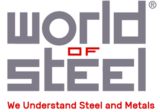Types of Scrap used in steel making
Heavy Melting Steel
- Industrial or commercial scrap steel greater than 6 mm thick, such as plates, beams, columns, channels; may also include scrap machinery or implements or certain metal stampings
Old car bodies
- Vehicles with or without interiors and their original wheels
Cast Iron
- Cast iron bathtubs, machinery, pipe and engine blocks
Pressing Steel
- Domestic scrap metal up to approx. 6 mm (0.24 in) thick. Examples – White goods (fridges, washing machines, etc.), roofing iron, water heaters, water tanks and sheet metal off cuts.
Reinforcing Bars or Mesh
- Used in the construction industry within concrete structures
Turnings
- Remains of drilling or shaping steels. Also known as “boring”.
Manganese Steel
- Non magnetic, hardened steel used in the mining industry, cement mixers, rock crushers, and other high impact and abrasive environments.
Rails
- Railway products are railway and track construction material including rails, check rails, rack rails, sleepers(cross ties), fish plates and sole plates.
Steel scrap in itself does not pose any risk to the environment, i.e. there are no environmental risks in transportation and storage of metal itself. However, if the steel scrap is contaminated with oil or mixed with other waste, this may be considered hazardous in relation to transportation or storage. For example, oil or any other liquid attached to scrap metal, when exposed to rain, may cause contamination to its surrounding environment.
